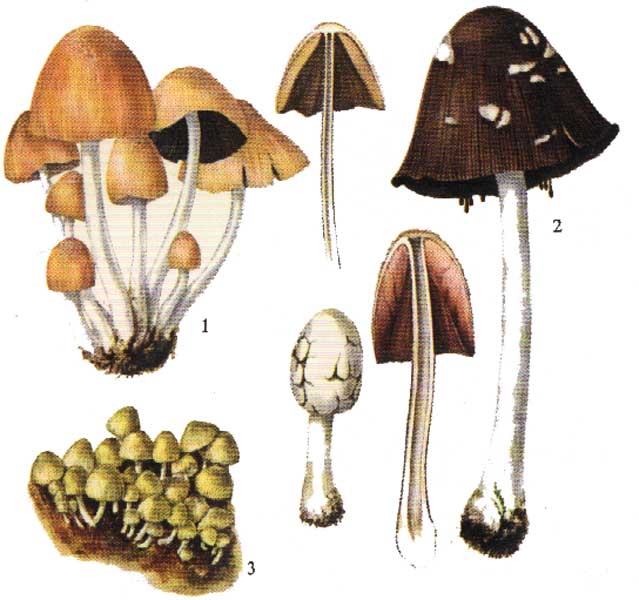
COPRINUS MICACEUS (Glistening Coprinus) (1)
Cap globular, ochraceous, cuspidate, with micaceous scales; margin uneven; then expanded 2-5 cm, with deep, radiating grooves and covered with granules. Stem cylindrical, smooth, sericeous, white, hollow. Flesh thin, whitish. Odor agreeable. Flavor mild. Gills close, narrow, free from the stem; whitish, then brown, finally black and mushy. Spores fuliginous. It grows in clusters, in all kinds of grounds, from spring to autumn. Of no alimentary interest; but harmful when its consumption is accompanied by alcoholic beverages. A similar species is Coprinus radians, of no alimentary interest, which grows singly on walls or on rotting wood.
COPRINUS PICACEUS (2)
Cap oval and covered by a white veil; then campanulate, 4-8 cm, fuliginous, with few sparse, whitish remains of the veil; radiating striae and grooves. Stem tall, bulbous base; white, fragile, hollow. Flesh thin. Odor disgusting. Flavor mild. Gills close, free, white, then pinkish, finally black and mushy. Spores black. It grows singly, in latifoliate woods. Edible.
COPRINUS DISSEMINATUS (3)
Cap 0-5-1-5 cm, white, whitish, or ochraceous; unlike other species of Coprinus, its gills do not dissolve into a slimy fluid; grows from spring to autumn, in dense clusters of hundreds of specimens, on latifoliate trunks, in humid woods; very pretty but not very interesting from an alimentary standpoint.